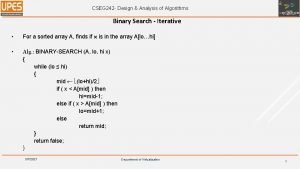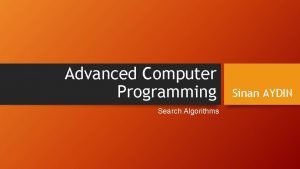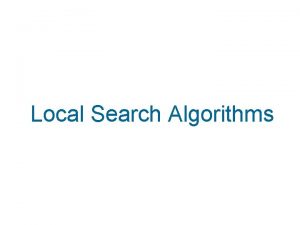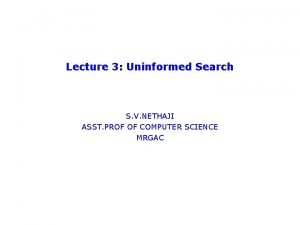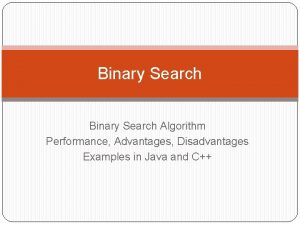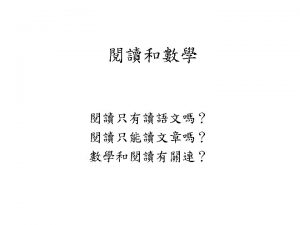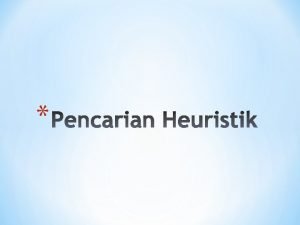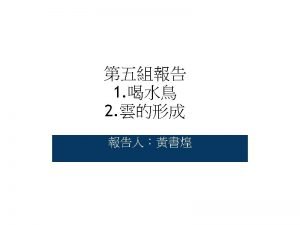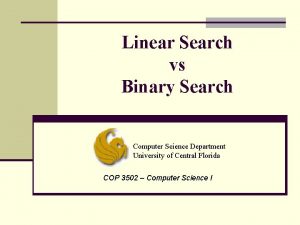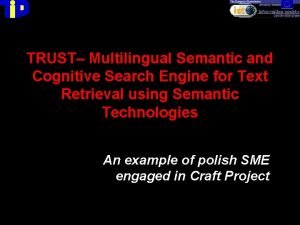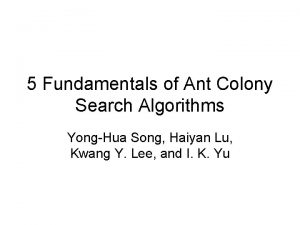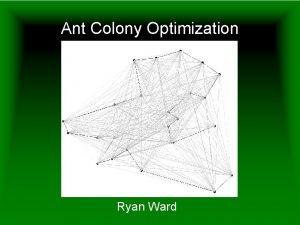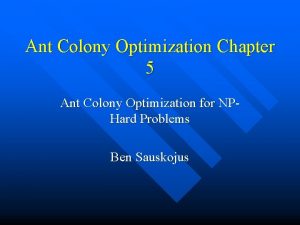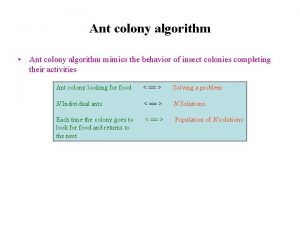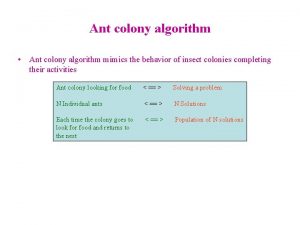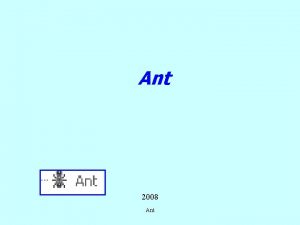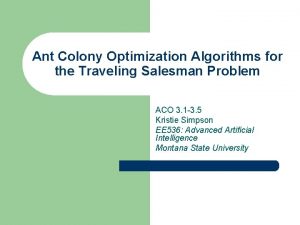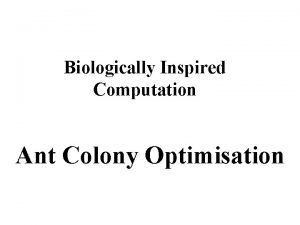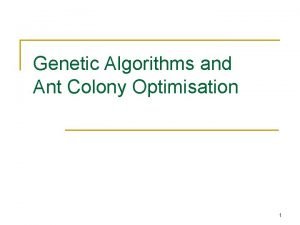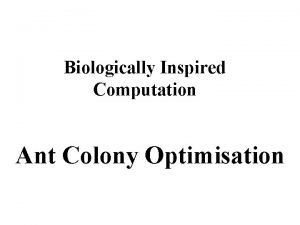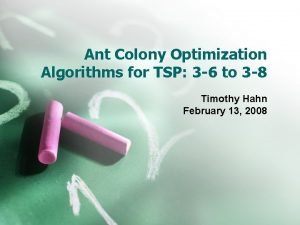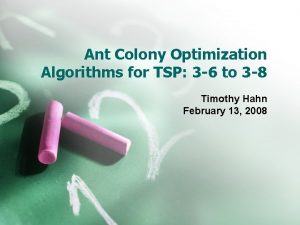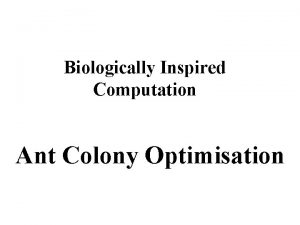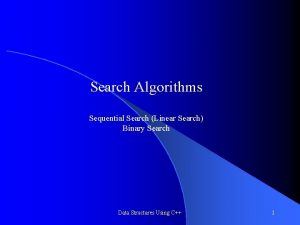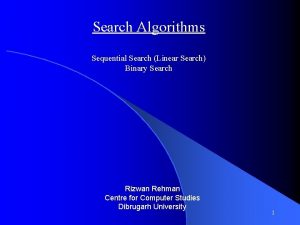5 Fundamentals of Ant Colony Search Algorithms YongHua

















- Slides: 17

5 Fundamentals of Ant Colony Search Algorithms Yong-Hua Song, Haiyan Lu, Kwang Y. Lee, and I. K. Yu

5. 1 Introduction • The ant colony optimization (ACO) is a meta-heuristic approach for combinatorial optimization problems. • Inspired by the foraging behavior of the social insects, especially the ants. • ACO algorithms belong to the class of model-based search (MBS) algorithm.

5. 1 Introduction (cont) • An MBS algorithm is characterized by the use of a (parameterized) probabilistic model that is used to generate solutions to the problem under consideration. • At run-time, ACO algorithms will update the parameters’ values of the probabilistic model in such a way that there will be more chances to generate high-quality solutions over time.

5. 2 Ant Colony Search Algorithm • The ACS belongs to biologically inspired heuristic algorithms. It was developed mainly based on the observation of the foraging behavior of a real ant. • It will be useful to understand how ants, which are almost blind animals with very simple individual capacities acting together in a colony, can find the shortest route between the ant nest and a source of food.

5. 2. 1 Behavior of Real Ants

5. 2. 1 Behavior of Real Ants (cont) • While it is walking, the ant deposits a chemical pheromone trail on the ground. • The pheromone trails deposited on the ground will guide other ants to the food source. • Each ant probabilistically prefers to follow a direction rich in pheromone rather than a poorer one. • The indirect communication between the ants via the pheromone trails allows them to find the shortest paths between their nest and food sources.

5. 2. 1 Behavior of Real Ants (cont) • In Fig. 5. 1 c, those ants that choose by chance the shorter path around the obstacle will more rapidly establish the interrupted pheromone trail compared with those that choose the longer path as there are more ants walking along the shorter path at each time unit.

5. 2. 2 Ant Colony Algorithms

5. 2. 2 Ant Colony Algorithms (cont) • Transition Rule • Pheromone Updating

5. 2. 2. 1 The Ant System

5. 2. 2. 1 The Ant System (cont)

5. 2. 2. 2 The Ant Colony System

5. 2. 2. 2 The Ant Colony System (cont) • A local updating rule is applied whenever a edge from city r to city s is taken:

5. 2. 2. 2 The Ant Colony System (cont) • As all ants complete their circuits, the shortest route found in the current episode is used in the global updating rule:

5. 2. 2. 3 The Max-Min Ant System

5. 2. 2. 3 The Max-Min Ant System (cont)

5. 2. 3 Major Characteristics of Ant Colony Search • Distributed Computation: Avoid Premature Convergence • Positive Feedback: Rapid Discovery of Good Solution • Use of Greedy Search and Constructive Heuristic Information: Find Acceptable Solutions in the Early Stage of the Process
 Binary search in design and analysis of algorithms
Binary search in design and analysis of algorithms Advanced search algorithms
Advanced search algorithms Uninformed search
Uninformed search Search by image
Search by image Which search strategy is called as blind search
Which search strategy is called as blind search Best first search
Best first search Disadvantage of linear search
Disadvantage of linear search Federated search vs distributed search
Federated search vs distributed search Tw.search.yahoo.com
Tw.search.yahoo.com Heuristik
Heuristik Search photo
Search photo Linear search vs binary search
Linear search vs binary search Informed and uninformed search in artificial intelligence
Informed and uninformed search in artificial intelligence Yahoo gravity
Yahoo gravity Unified search vs federated search
Unified search vs federated search Semantic search vs cognitive search
Semantic search vs cognitive search Mail @ malaysia.images.search.yahoo.com
Mail @ malaysia.images.search.yahoo.com Video.search.yahoo
Video.search.yahoo
